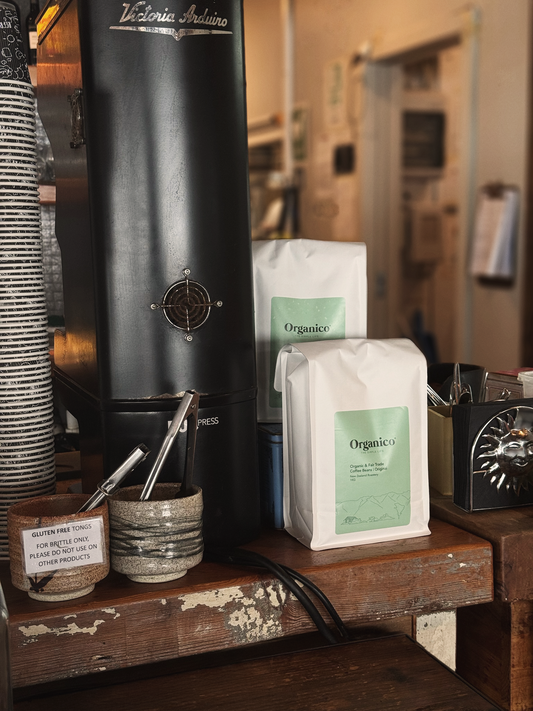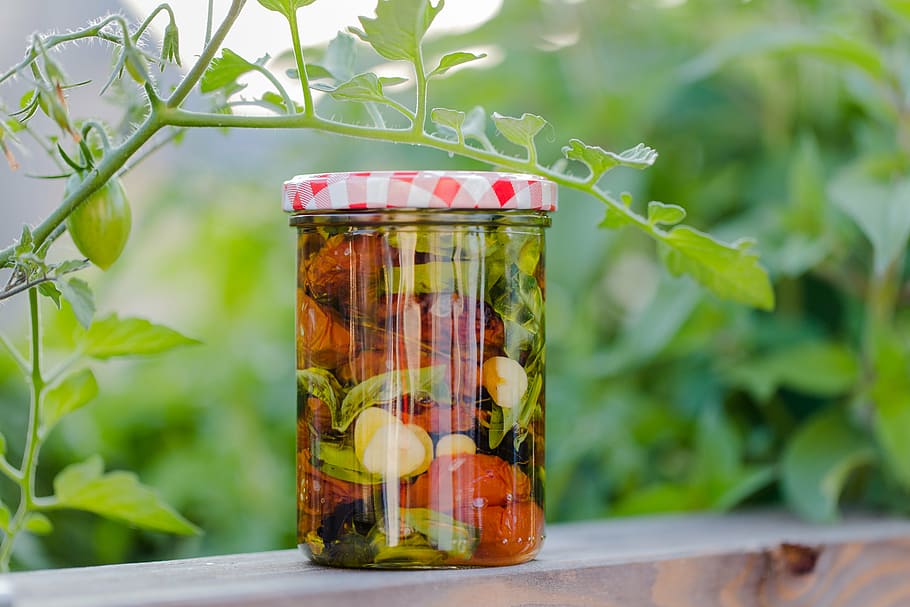Drying
Drying fruits and vegetables requires removing the water content. As bacteria needs water to survive, the drying process ensures that food doesn’t go bad over time. However, unlike other preservation methods, drying completely changes both the texture and taste of the food. Once food has been successfully dried, it can be stored in ambient conditions.
The simplest way to dry summer fruits and vegetables for the winter is to use a dedicated dehydrator. Simply load the machine with your food, and select the appropriate setting. Most modern dehydrators have a range of settings for different sizes and textures. If your fruits or vegetables still feel sticky or spongy once the drying process is complete, they aren’t ready – and require further drying. Food generally needs to be 95% dehydrated before it can be stored safely.
If you don’t want to buy a dehydrator, you can dry fruits and vegetables using your existing oven – but the results can be a little hit or miss. Thinly slice your fruit or vegetable, and soak in a solution of lemon juice and water in equal parts. After 10 minutes, line a baking tray with parchment paper, and place the slices onto it. Put the tray in a preheated oven at a temperature of between 130 – 160 degrees. If you’re drying citrus fruit, the temperature should be at the lower end of this scale. Rotate the baking tray every hour, and continue cooking until the slices are pliable and have a leathery texture.
Canning
The term “canning” is a little misleading. If you’re canning at home, you’re probably using mason jars or something very similar. This relatively simple method of preservation involves sealing food in a sterile, airtight environment. Both cooked and raw food can be successfully canned using heat to sterilize and seal the jar.
To can your fruits and vegetables at home, you’ll need a pressure canner, along with canning jars, seals, rings, lids, a funnel and a large pot for blanching. The principle involves killing bacteria inside the jar with heat. Steam pressure is applied to the airtight container that leaves a sterile vacuum in which food can stay safe and relatively fresh for several months.
Pickling
Pickling fruits and vegetables creates an inhospitable environment for bacteria. Potentially dangerous pathogens simply can’t survive the acidity of vinegar, which means food can be kept safe and edible for years.
Pickling is one of the simpler methods of food preservation, but it drastically changes the flavor of most fruits and vegetables. The process involves creating a pickling solution of white vinegar, salt and sugar, which is brought to a boil in a pan. The fruits and vegetables are placed in an airtight jar, and the solution is poured on top until all of the food is submerged. The jar is then sealed and stored for several days – as many as seven, for particularly chunky summer vegetables such as zucchini.
Fermenting
The fermentation process involves converting carbohydrates to alcohol or organic acids. To get the process going, you need to introduce salt, whey or a dedicated starter culture to water – creating the brine solution in which the food will ferment.
Fermenting summer fruits and vegetables is relatively easy, but it’s important to ensure that they’re cut into small and even chunks or slices. The food is put into an airtight container, and the brine is poured on top. It’s important to ensure that all of the food remains submerged in the brine until the fermentation process has finished. If you’re fermenting fruit, the process should take around 48 hours. However, because of their lower sugar content, vegetables tend to take a little longer.
Freezing
Freezing your summer fruits and vegetables is the easiest and quickest way to ensure they last throughout the winter. However, the process of freezing and thawing can damage softer fruits like strawberries – changing their texture completely. It’s also worth remembering that freezing doesn’t kill all bacteria; many become dormant until defrosted.
If you decide to freeze your fruits and vegetables, it’s usually best to freeze them first on a metal tray. Once they’re completely hard, transfer them to sterile, airtight freezer bags. If you’re freezing starchy vegetables such as potatoes, blanch them in iced water before placing them in the freezer. And if you’re storing fruits that can turn brown, such as apples, treat them with ascorbic acid first.
Oil Packing
The use of vegetable oils to preserve summer fruits and vegetables makes it harder for bacteria to develop — but it also adds a completely different dimension to the flavor. Ideal for preserving tomatoes, eggplants, herbs, onions and olives, oil packing creates anaerobic conditions (basically no air) with the addition of acid, usually vinegar. Most people use airtight mason jars to preserve fruits and vegetables these days, but sealable food bags can work just as well.
Salting
The hypertonic properties of salt make it very difficult for bacteria to survive. Organisms die or become deactivated through dehydration, which means food can be stored for long periods in ambient temperatures.
To salt your vegetables at home, place them in a large baking pan and submerge them in water. Add salt to the water until you notice it beginning to deposit on your vegetables – this is an indication that the saturation point has been reached. At this point, you should refrigerate the vegetables in the water for a week or so. Complete the process by draining the brine away and covering your vegetables with more salt, and store in a cool dry place until dried.
Don’t go without your favourite summer recipes during the cold winter months. Use these preservation methods to ensure your kitchen is well stocked with fruits and veggies throughout the year.
Happy preserving!
Credit goes to: Malcom Cox


